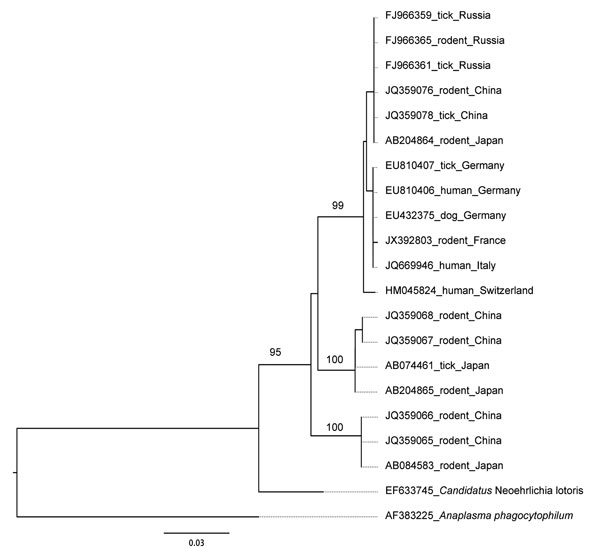Volume 18, Number 12—December 2012
Dispatch
Candidatus Neoehrlichia mikurensis in Bank Voles, France
Figure

Figure. . Phylogenetic relationships, as determined on the basis of the sequence of the groEL gene, between the unique Candidatus Neoehrlichia mikurensis genotype detected in a population of bank voles from the French Ardennes and other Candidatus N. mikurensis genotypes from other geographic regions. The phylogenetic tree was constructed by using the neighbor-joining method with the Kimura 2-parameter distance model. Bootstrap analysis was performed on 1,000 replicates; values are indicated at the nodes. GenBank accession numbers are indicated for each sequence used. The groEL sequence of Anaplasma phagocytophilum (accession no. AF383225) was chosen as an outgroup in the phylogenetic tree. Scale bar indicates estimated evolutionary distance.